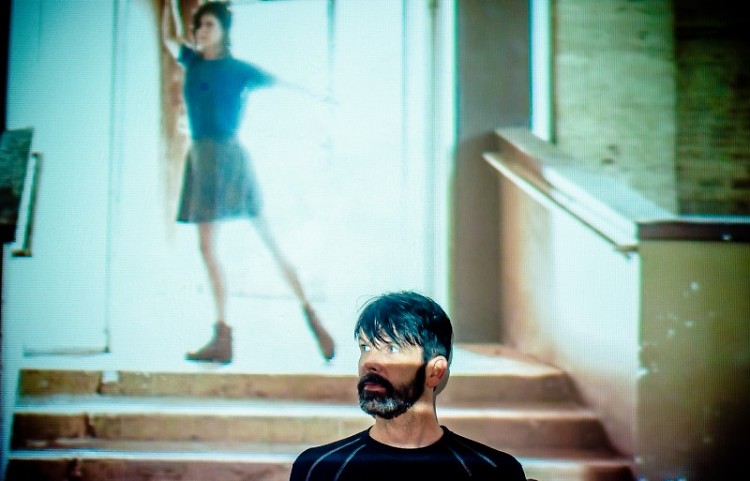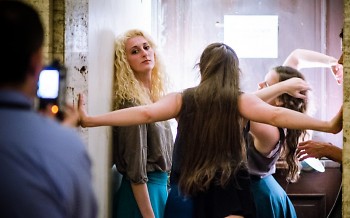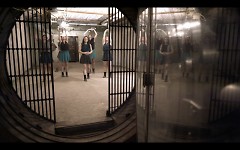It's a unique thing to stand in the space where "respirador (breather)" by Dance in the Annex (DITA) is presented during public ArtPrize hours.
I've made an effort to be in the space whenever possible, to be available to answer questions, and explain the piece.
I also make myself available to say nothing.
Everyone has their own process for interacting with the work, and I'm happy to say, some people take me up on my offer to hush my mouth.
I did the same thing last year, when DITA presented "Angle of Repose," at the old public museum, during ArtPrize. Like "respirador," the "Angle" installation was selected by ArtPrize jurors as one of the five best entries in the time-based category.
The most significant interactions I witness come from two completely different groups: children, and retirees (65+ years old.)
These two groups of people connect with the work in very different, but equally important ways.
Most of the senior visitors to the space come into it with little connection to modern/contemporary dance. However, they have a universally better grasp on art history than middle-aged or younger visitors. Probably because schools had richer curriculum pertaining to the arts, seniors are more often aware of dance pioneers like the late Martha Graham.
So I reference the way Martha Graham was criticized early on, for the "ugly" breath sounds she made, in her groundbreaking style of contract/release. I explain that the noises they hear through the speakers are part of that history, that we scored the piece with the music of those dancers moving through the spaces, and releasing those breaths.
And they have a bridge to the work.
I continue to explain how modern dance is one of the true American art forms. I say it is like jazz (another American creation) where artists master a system, like ballet, then proceed to "break the rules" and create their own, in a meaningful way.
And the bridge extends lower. They get that. It starts to make more sense.
One woman recently said to her friend, before she knew I was attached to the piece, "I don't get it." Her friend, still staring at the screens, replied, "I don't understand it, either, but I'm trying to."
That was the pinnacle moment. That is the point of everything we do. I told them "I don't always understand it, either, and it's okay - it's still beautiful, and moving."
Being told that it's okay to not understand something... this removes a barrier, to receive permission to be confused by it. It makes it more possible to begin to understand it.
And then... the children. Nine out of 10 children who enter the space immediately start dancing. They lock eyes with one of the dancers they see on the screens, and they mimic her movements. Completely emancipated from any concern about anyone watching them: free. It's amazing. It's almost a given: they all start moving, each in their own way. Eyes locked on the screens.
Because children operate outside the rules of concern for who's watching. They see something beautiful and full of life, and they aspire to become that thing. And they just do. Every time.
I encourage you to experience this. Come to SiTE:LAB if you have a chance, and see the curated installations that Paul Amenta has brought together this year. Come into the space where the huge movie screens feature some of the most talented, professional dancers Grand Rapids ever has known. They have created something extraordinary, and it is yours to interpret and experience in your own way.
As it should be.
Disclosure: Erin Wilson is a Dance in the Annex (DITA) board member and he is married to founder and Artistic Director Amy Wilson.
The Rapidian, a program of the 501(c)3 nonprofit Community Media Center, relies on the community’s support to help cover the cost of training reporters and publishing content.
We need your help.
If each of our readers and content creators who values this community platform help support its creation and maintenance, The Rapidian can continue to educate and facilitate a conversation around issues for years to come.
Please support The Rapidian and make a contribution today.


